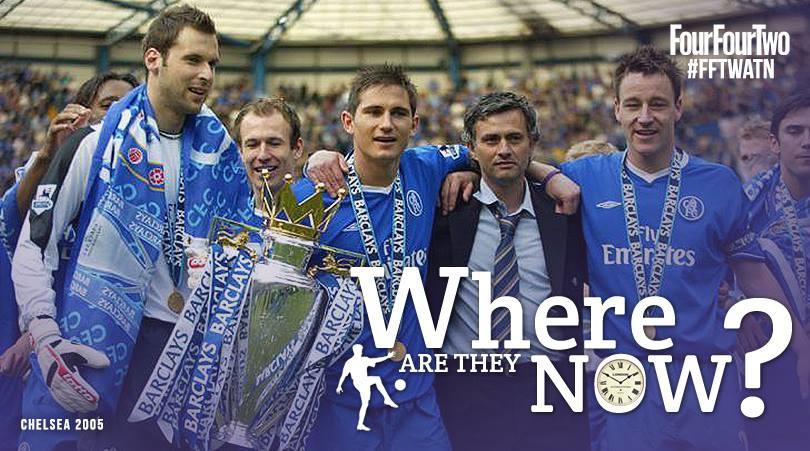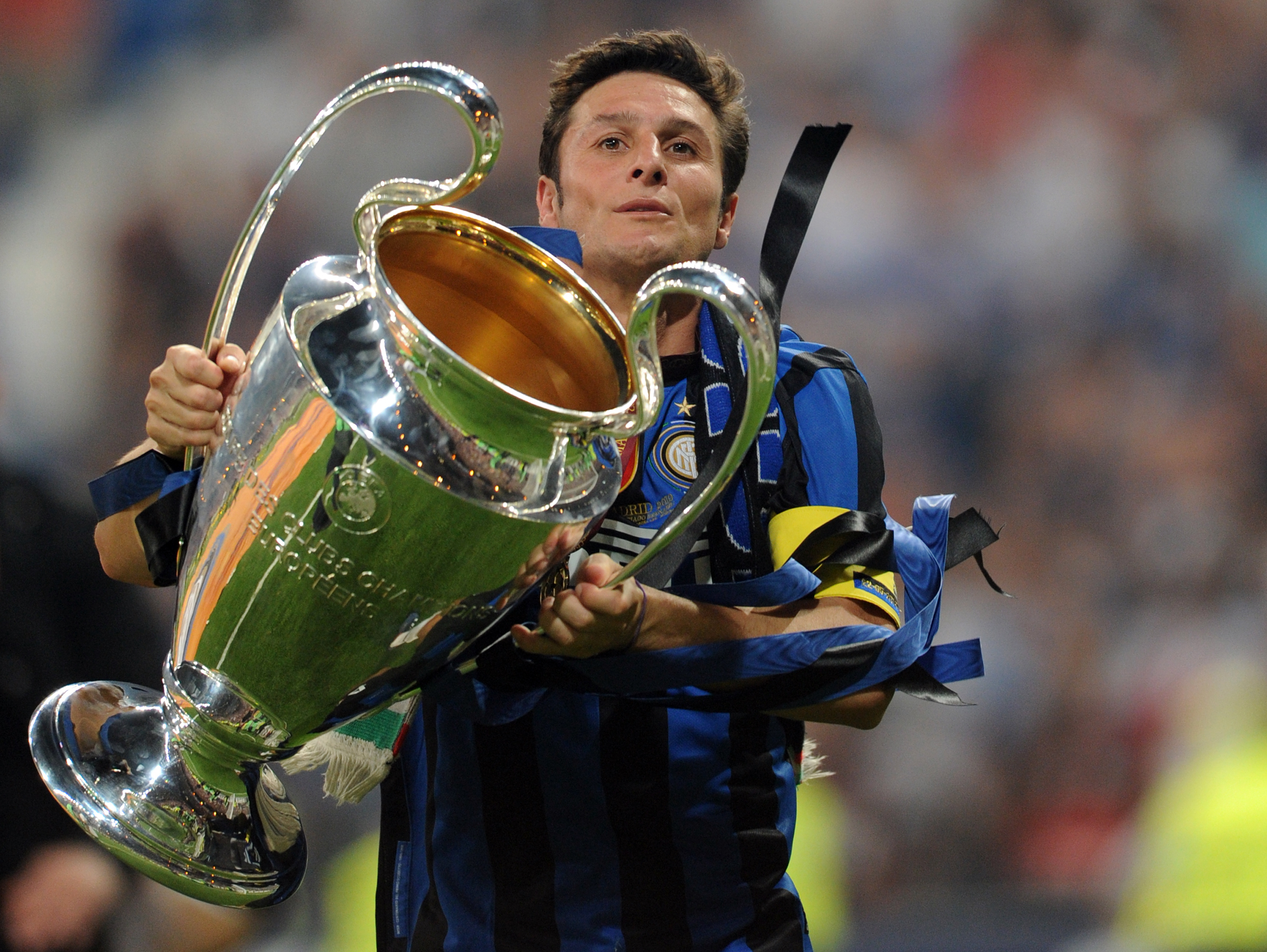Where are they now? Milan’s 2003 Champions League winners
Adam Digby harks back at Carlo Ancelotti’s Europe-conquering crop that picked off Italian rivals Inter and Juventus en route to victory
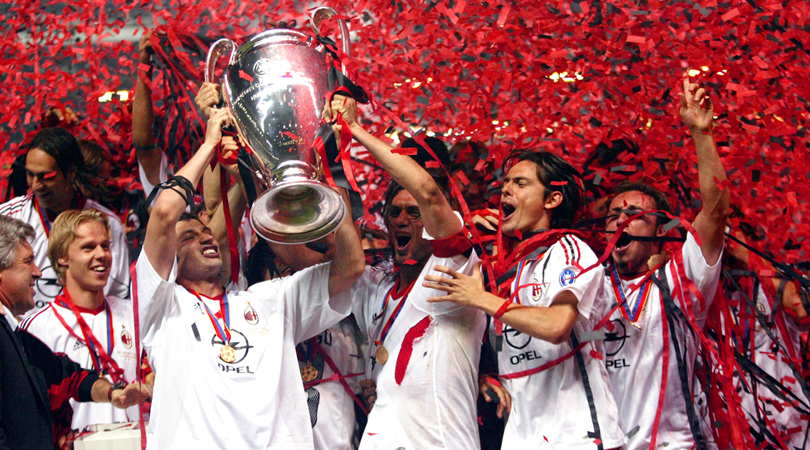
Dida
Dida was infamously injured by flares thrown by Inter fans during a chaotic derby in 2005
The Brazil international played a major role in this victory, not only saving three penalties in the shootout but also denying Alessandro Del Piero a first-half goal. Dida was often guilty of calamitous errors, but the 2002/03 and 2003/04 campaigns were undoubtedly the best of his career, as he won the Champions League and Italian title, was named Serie A goalkeeper of the year and finished 13th in the Ballon d’Or voting.
Dida was infamously injured by flares thrown by Inter fans during a chaotic derby in 2005, but went on to become one of only four shot-stoppers to make 300 appearances for the Rossoneri. In later years his form declined rapidly and he moved back to South America, retiring in 2015 and becoming an assistant coach with Chinese club Shenzhen FC.
Alessandro Costacurta
Costacurta passed a late fitness test to be included at Old Trafford and performed admirably as a makeshift right-back rather than in his usual central role
A part of the Milan team that dominated Europe under Arrigo Sacchi, ‘Billy’ Costacurta is often the forgotten man of those iconic Rossoneri sides. He made over 600 appearances for the club and won 19 major honours, including a staggering five European Cup/Champions League triumphs.
Costacurta passed a late fitness test to be included at Old Trafford and performed admirably as a makeshift right-back rather than in his usual central role.
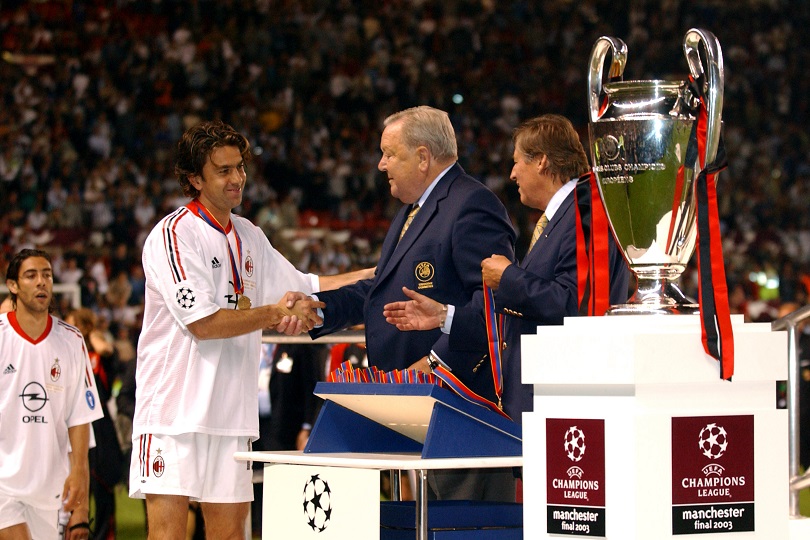
Costacurta was booked in the opening minutes for a foul on Gianluca Zambrotta and was eventually substituted. He would play four more years, a penalty in his final match seeing the 41-year-old become the oldest player ever to score in Serie A, a record Francesco Totti might covet. He spent a brief stint as an assistant coach with Milan but now works as a pundit on Sky Italia.
The best features, fun and footballing quizzes, straight to your inbox every week.
Alessandro Nesta
He played almost 50 matches in his debut season at Milan, culminating in a wonderful Champions League final performance in which he held the backline together
Were it not for the injury woes that plagued his career, Nesta would arguably be seen as the finest defender of his generation. A graduate of the Lazio academy, he first came to prominence when he accidently broke Paul Gascoigne’s leg in training.
The youngster recovered from that controversy and went on to become captain of the Roman club, leading them to a league and cup double in 1999/2000, just 12 months after clinching the last ever European Cup Winners’ Cup.
But just two years later Lazio were in financial meltdown, with Nesta sold as the club looked to stay afloat. He played almost 50 matches in his debut season at Milan, culminating in a wonderful Champions League final performance in which he held the backline together before dispatching his new side’s fourth penalty in the shootout. Seven more major honours followed before he moved to MLS outfit Montreal Impact, remaining in North America after his retirement and becoming coach of Miami FC.
Paolo Maldini
He collected honours and personal accolades relentlessly and was recognised the world over as probably the best left-back of all time
Starting in the youth team as the son of Milan’s first European Cup-winning captain, Maldini went on to become an even greater player than his father Cesare, representing the club a record 902 times.
He collected honours and personal accolades relentlessly and was recognised the world over as probably the best left-back of all time. In the later stages of his career, Maldini moved into the centre of defence and excelled there too.
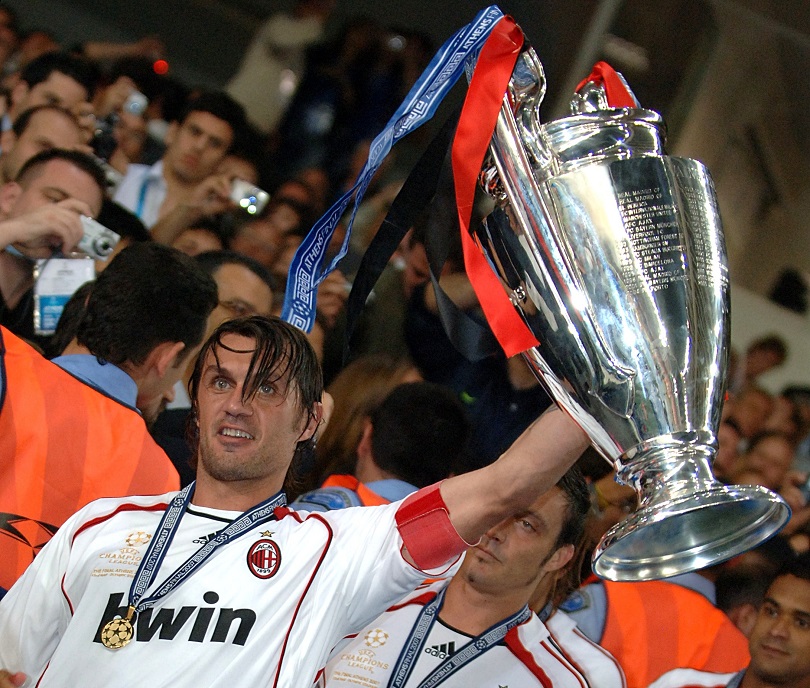
He perhaps should have opened the scoring at Old Trafford, missing a header when Andrea Pirlo picked him out with a second-half free-kick. Maldini called time on his career in 2009 – amazingly, he was jeered by some of the Rossoneri ultras in his last game – although the club did retire his No.3 shirt in tribute to his impact over a 25-year period. Last year he rejected to chance to become Milan’s technical director.
Kakha Kaladze
Always politically and socially aware of the problems in his homeland, Kaladze retired in May 2012 and was elected to Georgia’s Parliament just five months later
While Kaladze might be considered the least naturally talented member of this great Milan side, he's had the most interesting career after retiring as a player.
The Georgian came to San Siro in 2001 after spells with Dinamo Tbilisi and Dynamo Kyiv, his ability in both attack and defence facilitating Maldini’s move away from full-back. He was one of only two Milan men to miss his penalty in the shootout here, and dropped in and out of favour over the next seven years, before spending his final two seasons at Genoa.
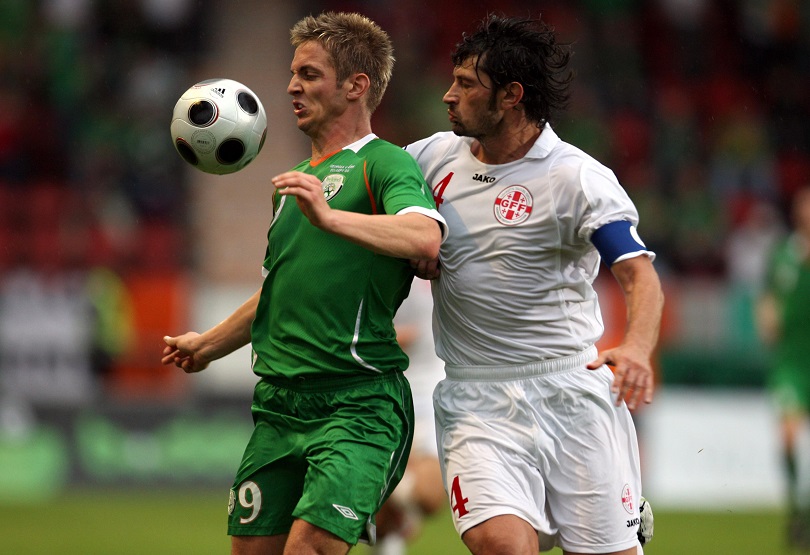
Always politically and socially aware of the problems in his homeland, Kaladze retired in May 2012 and was elected to Georgia’s Parliament just five months later. He is currently Vice-President and Minister of Energy.
Gennaro Gattuso
His hard tackling and combative style was every bit as important to Milan – and indeed the Italian national side – as Pirlo’s graceful passing
The battling engine room of this Milan side, ‘Rino’ Gattuso ensured those playing further forward in this incredible team could do so safe in the knowledge that their snarling defensive midfielder would snuff out any opposition attacks.
His hard tackling and combative style was every bit as important to Milan – and indeed the Italian national side – as Pirlo’s graceful passing, but this game was arguably the birth of the legendary duo.
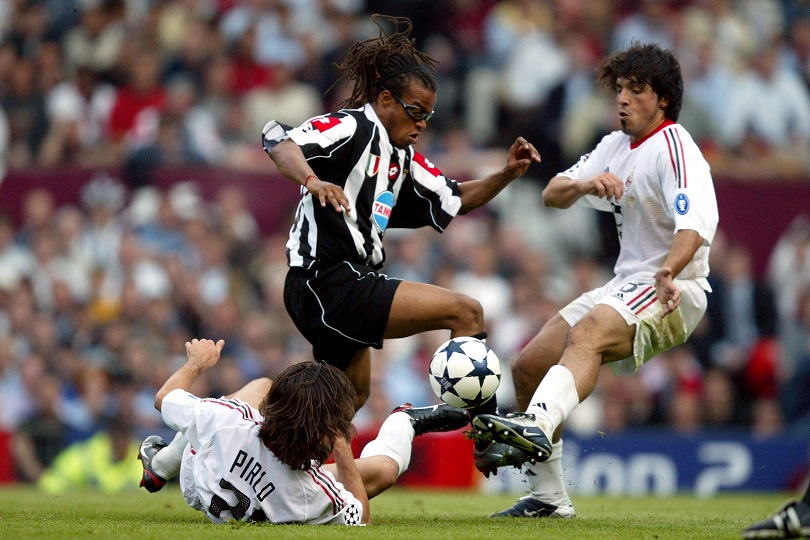
Over previous seasons both had been largely reserve players, but shined over a decade together before moving on. Gattuso had one year with Swiss side FC Sion, where he became player-coach before retiring from playing. He guided Pisa to Serie B in 2016 and became manager of A.C. Milan Primavera in 2017.
Andrea Pirlo
In the final he created one chance for Maldini but was withdrawn with around 20 minutes of normal time remaining
The velvet glove to Gattuso’s iron fist, Pirlo was still a clean-shaven and fresh-faced youngster in 2003, making just 18 league appearances in the previous campaign but quickly becoming an essential part of Carlo Ancelotti’s side. In the final he created one chance for Maldini but was withdrawn with around 20 minutes of normal time remaining.
Pirlo’s career became iconic over subsequent seasons – he won a plethora of trophies with Milan (totalling two Champions Leagues, two Serie A titles and one Coppa Italia) before inexplicably being allowed to leave for Juventus when the Rossoneri deemed him washed up.
He won four consecutive league titles with the Turin team and appeared in another Champions League final, before departing for a fresh challenge with New York City FC.
Clarence Seedorf
In the final, Seedorf created a wonderful headed chance for Pippo Inzaghi but missed his own penalty in the shootout
Seedorf is the man who did it all in world football, winning trophies everywhere he went and usually doing so with incredible style and effortless charm.
He had already lifted the Champions League trophy with Ajax (1995) and Real Madrid (1998) when he joined Milan, with this triumph making him the first – and still only – player to achieve the feat with three different clubs. He even won it again in 2007 with Milan.
In the final, Seedorf created a wonderful headed chance for Pippo Inzaghi but missed his own penalty in the shootout – a cruel end to an otherwise excellent display.
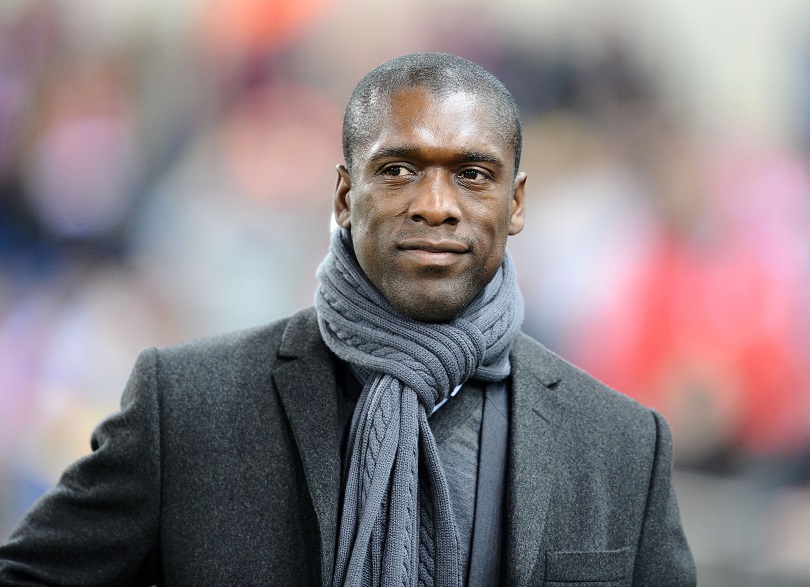
A 10-year stint with Milan ended in 2012, but two years later he returned as the first-ever Dutch coach in Serie A. It was to be no romantic stint, though: Seedorf lasted just five months and had a short spell as coach of Chinese club Shenzhen last year.
Rui Costa
A return to Benfica eventually followed, where the retired star is now the club’s director of football
Much like Gabriel Batistuta, Rui Costa was a captain and idol of Fiorentina who left in search of silverware. But while the Argentine striker’s goals powered Roma to a Serie A title, his old Portuguese team-mate didn’t prove to be as influential away from the Viola, essentially becoming a back-up to Kaka, who arrived at San Siro a few months after this final.
A return to Benfica eventually followed, where the retired star is now the club’s director of football. His wonderful ability on the ball will never be forgotten, but Costa never truly delivered his best at San Siro.
Andriy Shevchenko
Shevchenko had struck 175 goals in 296 games for Milan, but managed just nine in 48 Premier League appearances for Chelsea
If the Portuguese No.10 floundered at Milan but shone elsewhere, Chelsea fans would argue that the exact opposite is true of Andriy Shevchenko. The Ukrainian striker was the man expected to bag the goals for this Rossoneri side and he did just that, with this final arguably launching him into the most prolific phase of his career.
After netting the winning spot kick, he – aside from briefly choking in Istanbul – proved unstoppable in the following three seasons, prompting that ill-fated £30 million move to Stamford Bridge in 2006 after a Ballon d’Or win two years prior.

Shevchenko had struck 175 goals in 296 games for Milan, but managed just nine in 48 Premier League appearances. After returning to Dynamo Kyiv he retired in 2012 and entered politics in his homeland, before being appointed Ukraine’s head coach last year.
Filippo Inzaghi
After retiring in 2012 he was hired and then fired as Milan coach, and is currently boss of third-tier side Venezia
The master poacher, Inzaghi had suffered through a tough time at Juve under Ancelotti, but like the coach he did much better after moving to San Siro – in the 2002/03 season he bagged 30 goals in 49 appearances.
Yet he was denied during this final by a spectacular save from Gianluigi Buffon to keep out a powerful header that was destined for the bottom corner.
Over the following years he would be dropped in favour of the Kaka-Shevchenko tandem, but return to prominence in the 2007 Champions League Final, where his brace earned the club revenge over Liverpool for the 2005 final.
After retiring in 2012 he was hired and then fired as Milan coach, and is currently boss of third-tier side Venezia.
Roque Junior (sub)
Spells with five more clubs followed before his retirement in 2010, which led to a brief and disappointing spell as coach of XV de Piracicaba in his homeland
Yes, a team that had Rivaldo on the bench instead opted to bring on Roque Junior as their first substitution. Introduced after 66 minutes, the Brazilian defender was making only his second Champions League appearance of the season and one of just eight overall, having unsurprisingly struggled to find space in such a talent-packed squad.
He was sent out on loan the following season, spending a short and unsatisfying spell at Leeds, where his one highlight was scoring twice as the Yorkshire club lost a League Cup tie with Manchester United.
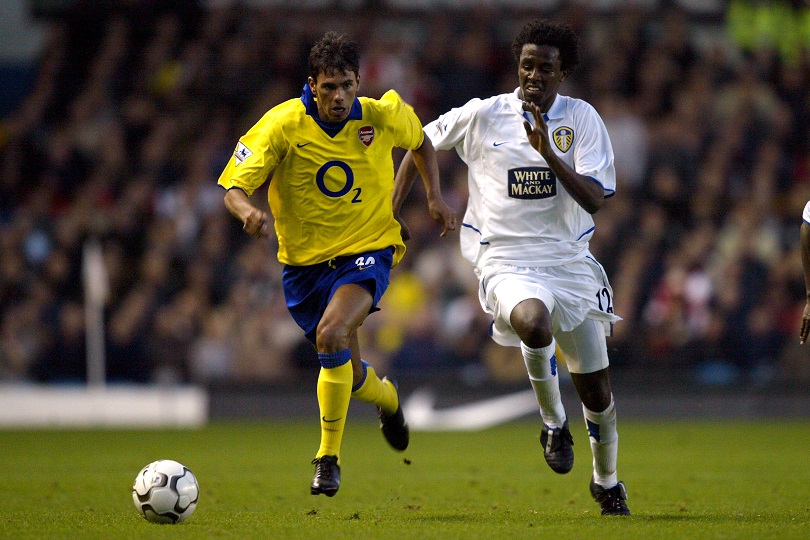
Spells with five more clubs followed before his retirement in 2010, which led to a brief and disappointing spell as coach of XV de Piracicaba in his homeland.
Massimo Ambrosini (sub)
Sent on in this clash with just three minutes of normal time remaining, he was often used when the Rossoneri had a lead to protect
It was no surprise that Ambrosini spent much of his Milan career as a reserve, considering the sheer volume of world-class midfielders at San Siro. Sent on in this clash with just three minutes of normal time remaining, he was often used when the Rossoneri had a lead to protect.
However, he also had moments in the spotlight, including the header which secured the club’s place in the 2005 Champions League Final and an assist to help repeat the feat two years later.
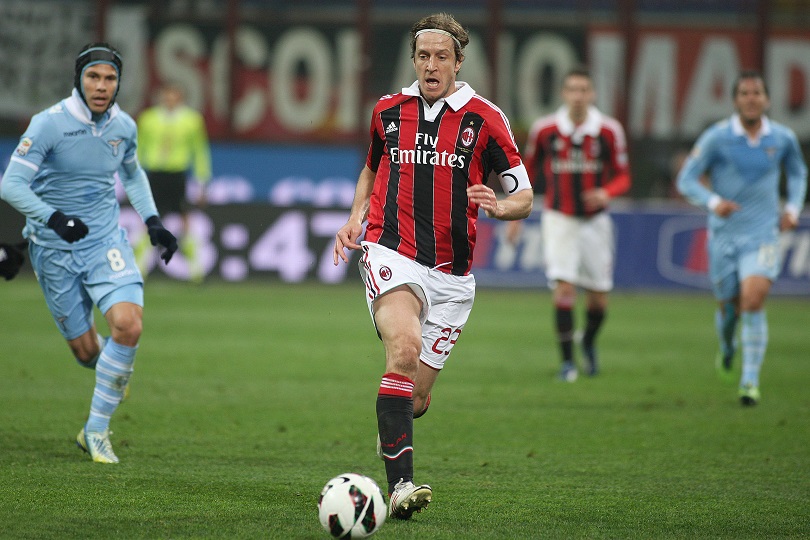
Following the mass exodus of senior players that took place in subsequent campaigns, Ambrosini became club captain before he too moved on to Fiorentina, retiring in 2014 and becoming a pundit on Sky Italia.
Serginho (sub)
The 2002/03 campaign saw him at his very best, something he clearly demonstrated at Old Trafford
While the Milan defence was unquestionably solid, Brazilian wing-back Serginho often provided a spark off the bench. Far more attack-minded than the regulars in Ancelotti’s starting XI, he arrived at the club in 1999 and went on to make almost 200 appearances before retiring nine years later.
The 2002/03 campaign saw him at his very best, something he clearly demonstrated at Old Trafford by creating that headed chance for Inzaghi minutes after coming on. He took the first Milan penalty and made no mistake, beating Buffon and putting his team on the path to victory.
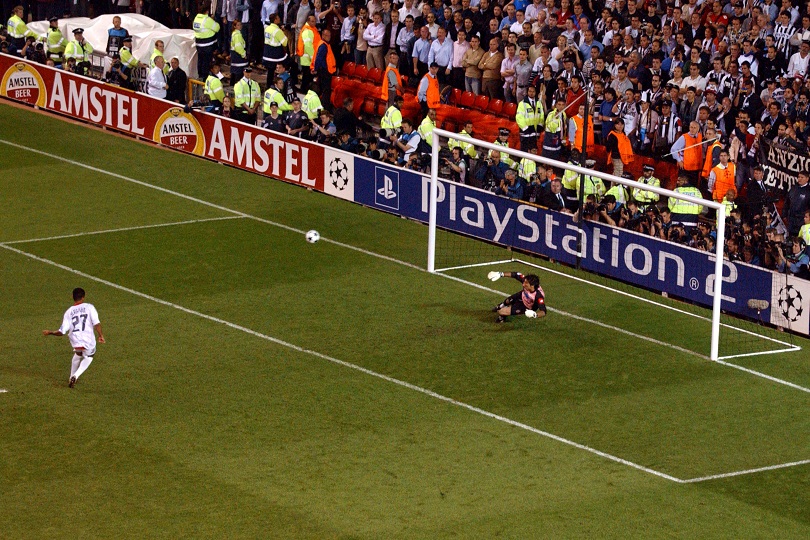
Carlo Ancelotti (manager)
This match was arguably the real starting point of the Ancelotti legend, his triumph in the competition that now defines him as a coach.
Having impressed at Parma, he was sacked by Juve in 2001 for the crime of finishing as Serie A runner-up in each of his two seasons in charge. Silvio Berlusconi handed him the reins at San Siro and the former Roma and Milan midfielder thrived, placating his boss while shoehorning a wealth of talent into his starting XI.
The 4-2-3-1 formation he often deployed became the title of his book – My Christmas Tree – and he would go on to reach the final of the Champions League twice more with Milan (winning in 2007, losing in 2005) before enjoying spells at Chelsea, PSG, Real Madrid (where he won a third Champions League title in 2014) and now Bayern Munich.
More Where Are They Now • New features you’d like every day on FourFourTwo.com
